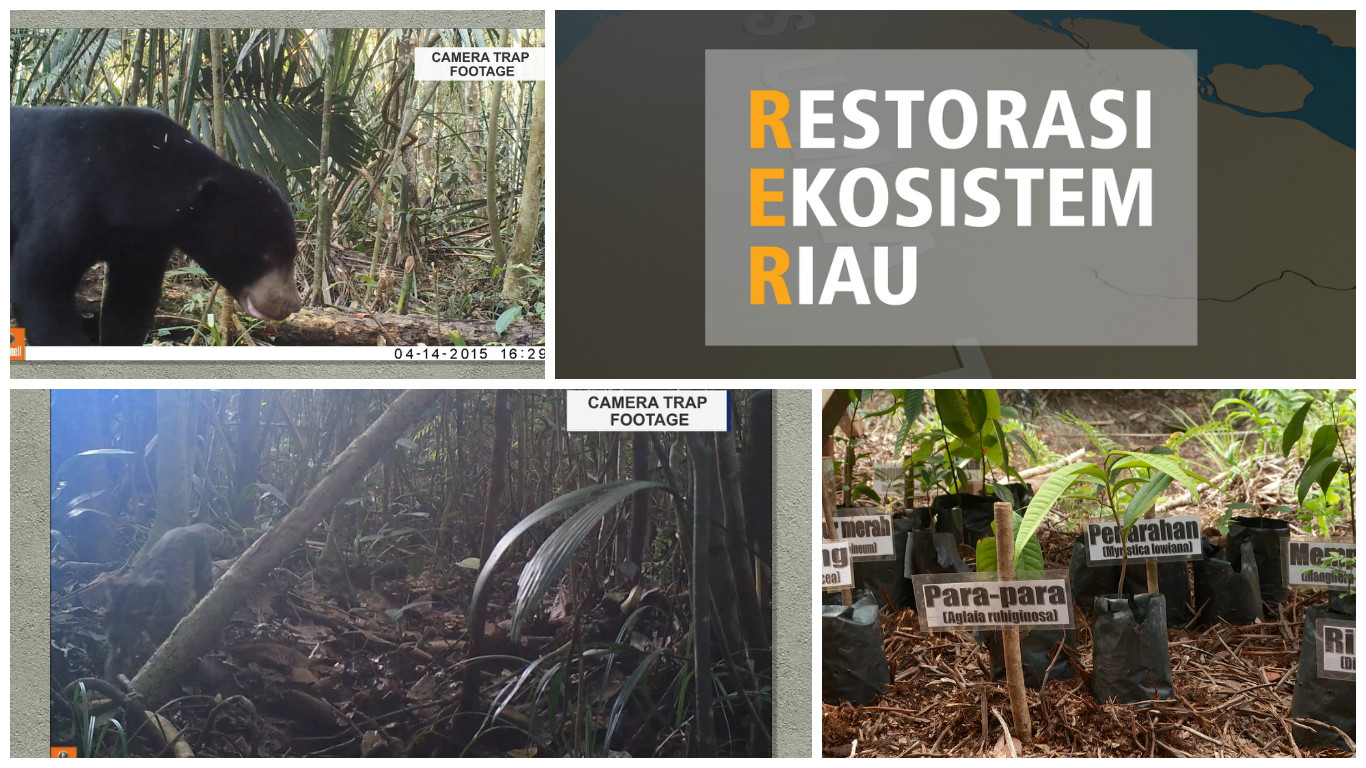Landscape Level Restoration of Peat Forest in Kampar Peninsula
By: Dr. Petrus Gunarso – Conservation Director, APRIL
As we are all aware, Indonesia’s peatland areas are some of the most sensitive and endangered ecosystems in the world, while the Kampar Peninsula landscape is one of the largest peatland areas in Southeast Asia.

Dr. Petrus Gunarso – Conservation Director, APRIL
On my recent visit there, I saw for myself the rich biodiversity effectively protected and restored in the Restorasi Ekosistem Riau (RER) site.
However, it wasn’t always that way. Up until 2013, years of selective logging had degraded the Kampar Peninsula forest area and this fragile ecosystem was also threatened by the draining of peat swamp by commercial agriculture and fires, damaging the landscape.
Launched in 2013, RER is a long-term project with the objective of restoring ecologically important peatland landscape on the Kampar Peninsula in Riau Province, Indonesia. Since then the project has grown from 20,000 hectares to over 70,000 hectares.
Under the eco-restoration license from the Ministry of Environment and Forestry, we work with our partners to protect, assess, restore and then manage this important landscape working with the local community. As well as forming an important part of the company’s sustainability programme and represents a living, breathing example of the landscape approach in action.
I am often asked about the motivations behind the project and there are several, both environmental and commercial. Importantly, it’s the right thing to do for the landscape; protecting the Kampar peat dome has far reaching benefits to a wider landscape.
RER also contributes to our sustainability efforts, diversifying the local employment market, providing alternatives to agriculture through the small business ecosystem that grows around the project. It helps to combats deforestation, while the environmental services it provides – water, oxygen and the wealth of wildlife – are also benefits.

Restorasi Ekosistem Riau (RER) was launched in 2013 to protect ecologically important peat forest in Kampar Peninsula, Riau, Indonesia.
As well as the environmental imperatives, we believe there is a strong business case for peatland conservation and restoration as part of a sustainable forestry model. This is an area that we are going to explore and develop further in the coming period.
RER also acknowledges that our business is part of an existing landscape that we must fit into, rather than expecting the landscape to fit around our business. This has influenced our conservation, restoration and social and economic development thinking from the outset. It also means that we need to collaborate with all those who interact with the landscape and accommodate all interests.

RER’s four phase restoration model: protect, asses, restore, manage.
In this way, RER is about collaboration and the landscape approach we apply is an adaptive process that ensures that all perspectives are considered and we achieve a balance between the many objectives – from environment to community to economic. We think this collaborative approach is vital to the long-term sustainability of forestry in Indonesia.
In summary, I believe RER illustrates what a ‘triple win’ can look like for community, country, and the company. Our partners recognize that RER is a living, working blueprint – an evolving example of what other public and private sector organizations more broadly can achieve through strong partnerships and vision.
It is my hope that the learning from RER and the application of a landscape approach can be replicated across our conservation areas and I hope, evolve as best practice for others to follow.
More on RER: http://www.rekoforest.org/
http://www.youtube.com/watch?v=7RlxppfEsHA




